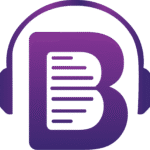For anyone working in science, the feeling is all too familiar: a new day, a new deluge of research papers. Whether you’re a seasoned professor, a busy clinician, or just someone who needs to stay current in your field, the sheer volume of new scientific literature can feel overwhelming. How do you keep up without sacrificing your daily routines (or your sanity)?
We recently received a great question from a reader grappling with this exact challenge. They shared their own experience, highlighting the universal struggle of staying current when “reading scientific papers always falls through the cracks.” While there’s no magic bullet, we’ve compiled some excellent strategies, drawing from our reader’s insights and adding a few of our own, to help you navigate the ever-expanding scientific landscape.
You Don’t Have to Read Everything (But it Helps to Know What’s Hot!)
The first, and perhaps most liberating, realization is this: you don’t need to read every single paper published. The goal isn’t encyclopedic knowledge, but rather strategic engagement. Knowing the key discussions and controversial topics within your field can be incredibly valuable – not just for impressing colleagues, but for genuinely understanding the direction of your discipline.
Here are some actionable tips, particularly for those in Biomedical Science and Medicine:
- Strategic Scanning with PubMed (or your field’s equivalent): Make it a ritual, not a chore. Dedicate a specific, recurring time slot each week – say, Sunday mornings for an hour – to scan PubMed (or Scopus, Web of Science, etc., depending on your field). Use a few targeted keywords to filter the noise. Download anything that genuinely piques your interest. The key here is consistency and a focused approach.
- Conferences: Your concentrated dose of cutting-edge science: If you have the opportunity, go to conferences! They offer an unparalleled chance to immerse yourself in the latest research and engage directly with experts. Pay special attention to:
- Keynote sessions: These often provide high-level overviews and insights into general concepts and emerging trends.
- Original research sessions: While these might require some pre-reading to fully appreciate, they showcase groundbreaking new findings.
- “Controversial” or debate sessions: These are goldmines for understanding the current flashpoints and differing perspectives in your field. The lively floor debates often reveal the true nuances of a topic.
- Cultivate Expert Connections: Don’t underestimate the power of human connection. If you know experts in your field, try to schedule regular informal discussions. Bring a paper or two that you’ve been grappling with. This not only helps you stay current but also provides a valuable sounding board for your own understanding. Your counterpart will likely appreciate it too, as it helps them stay sharp.
- Join or Create a Journal Club: The “See one, Do one, Teach one” philosophy extends beautifully to scientific literature. Journal clubs are a fantastic way to collectively tackle the reading burden. Gather a few colleagues and meet regularly – weekly, bi-weekly, or monthly. Each person can take turns presenting a paper they found particularly insightful since the last meeting. This collaborative approach ensures everyone benefits from shared knowledge and critical discussion, improving your understanding and presentation skills along the way.
Beyond the Traditional: Leveraging Technology
While our reader’s advice is spot-on, here at Briefio.app, we’re all about maximizing efficiency and understanding. Here are a couple more ideas to complement the above:
- Set up tailored alerts: Many platforms like PubMed, Google Scholar, and even individual journal websites allow you to set up email alerts for new publications based on specific keywords or authors. This automates the scanning process, bringing relevant papers directly to your inbox.
- Utilize AI-powered tools (like Briefio.app!): This is where Briefio.app can be your secret weapon. Instead of spending hours sifting through dense papers, use Briefio to quickly summarize key findings, methodologies, and conclusions. Get the gist of a paper in minutes, allowing you to prioritize which ones warrant a deeper dive. This frees up your valuable time for critical thinking, discussion, and truly understanding the impact of the research.
Staying on top of scientific literature is an ongoing journey, not a destination. By adopting a strategic approach, leveraging both traditional methods and modern tools, you can transform this daunting task into a manageable and even enjoyable part of your professional life.
What are your go-to strategies for keeping up with scientific literature? Share your tips in the comments below!





